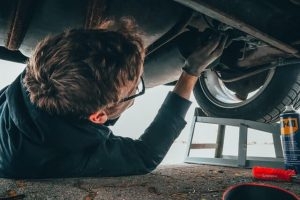Engineering and manufacturing sectors remain cornerstones of the UK economy. Despite shifts in global manufacturing dynamics, these industries continue to demonstrate their importance, with MakeUK reporting a £217 billion GVA output in 2024, supporting 2.6 million jobs.
These statistics underline the vital role these sectors play today. However, their contributions are coupled with significant workplace risks, requiring meticulous attention to health and safety.
Persistent Risks in Engineering and Manufacturing
While technological advancements have transformed operational landscapes, the fundamental need to safeguard workers remains unchanged. Tragically, incidents still occur, such as the £200,000 fine imposed on an English engineering firm following a fatal injury in 2023.
These events serve as stark reminders of the importance of proactive risk management. Employers must address hazards consistently, ensuring both employees and contractors operate within safe environments. By identifying common risks, implementing robust safety measures, and fostering continuous training, organisations can cultivate safer workplaces, where risks are mitigated effectively.
Common Health and Safety Challenges
Vehicular Hazards
On-site vehicles like forklifts, pallet trucks, and cranes are indispensable but introduce risks such as collisions, crushing injuries, or falls. Employers can mitigate these hazards through clear signage, designated walkways, and regular vehicle maintenance. For road operations, advanced driver training and routine checks can help prevent accidents caused by mechanical failures or hazardous driving conditions.
Machinery Hazards
The moving parts of machinery pose risks of entanglement, crushing, and other severe injuries. Protective measures such as proper machine guarding, regular maintenance, and comprehensive employee training—including lockout-tagout (LOTO) procedures—are essential.
Manual Handling Injuries
Lifting and moving heavy objects can lead to musculoskeletal injuries or fatigue. Employers should provide ergonomic assessments, mechanical aids, and safe lifting training to reduce these risks. Job rotation can further alleviate repetitive strain and improve worker safety.
Slips, Trips, and Falls
Falls from heights remain the third leading cause of fatal injuries, accounting for 20% of all fatal workplace accidents. Contributing factors include slippery floors caused by spills or unsuitable footwear. Regular inspections, proper footwear policies, and ensuring the use of harnesses and other safety equipment are critical to reducing these incidents.
Electrical, Chemical, and Fire Hazards
Live wires, hazardous chemicals, and high-heat tasks like welding present unique challenges. Proper storage, handling protocols, and deployment of suitable PPE help mitigate these risks. Fire protection systems and regular inspections of high-risk areas further enhance workplace safety.
Cultivating a Culture of Safety
Creating a safety-first culture requires leadership commitment, where managers model safe behaviours and champion the importance of compliance. This should be supported by:
- Comprehensive Training: All employees, regardless of experience, should undergo regular training tailored to their specific roles.
- Open Reporting: Encouraging workers to report unsafe conditions fosters transparency and facilitates timely interventions.
- Near miss reporting – By reporting near misses it allows you to focus on prevention and risk reduction rather than a cure – Wirehouse has a handy accident reporting tool which has helped 100’s of businesses prevent accidents.
- Routine Inspections: Frequent audits and safety committee reviews help identify and address potential hazards proactively.
- Proactive measures like these ensure compliance and demonstrate a commitment to workforce well-being. While incidents cannot always be avoided, a strategic approach significantly reduces their frequency and severity.
A Partnership Approach to Health and Safety
Managing health and safety in engineering and manufacturing is a complex, ongoing task. While internal teams play a vital role, some organisations choose to partner with external experts to supplement their efforts. Wirehouse can offer insights into best practices, assist with training programs, and provide tailored strategies to address unique challenges, allowing employers to focus on their core operations.
Ultimately, by embedding a robust culture of safety and leveraging available expertise, organisations can create environments where employees thrive, risks are minimised, and productivity is maximised.
Contact us on 033 33 215 005 or email websiteenquiries@wirehouse-es.com to see how we can work together!



